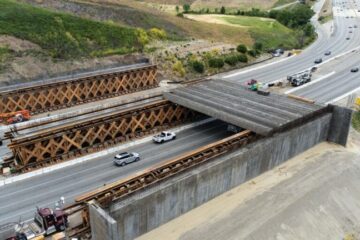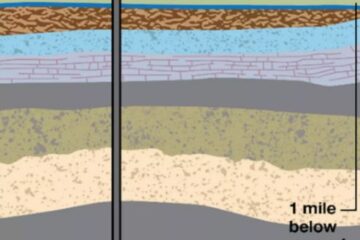Ban on New Forest Roads Upheld by Federal Judge
Officials say the ruling against the White House would help shield about 44 million acres.
Source of this article – Los Angeles Times, September 21, 2006
By TIM REITERMAN, Times Staff Writer
SAN FRANCISCO — A federal judge has restored broad protection to about one-third of national forestland in the lower 48 states, rejecting efforts by the Bush administration to relax a ban on new road building and logging in the most pristine forests.
The decision by U.S. District Court Magistrate Judge Elizabeth D. Laporte gives new life to a hotly contested environmental decree, a Clinton administration policy that sought tojarotect the parts of the forests that don’t yet have any roads in them, including 4.3 million acres in California.
The policy responded to concerns that areas of the forests that are sanctuaries for wildlife and reservoirs of clean water would be damaged by logging and other types of development.
America’s national forests, once the province of timber companies and only the most intrepid outdoor enthusiasts, have become destinations for millions of people — hikers and skiers; hunters and fishermen; river rafters and mountain bikers — many of whom seek out the least disturbed areas.
In her ruling Tuesday, Laporte declared that the Bush administration could not weaken the ban until it complied with requirements of the federal Endangered Species Act and the National Environmental Policy Act.
While the ruling does not put an end to the controversy, environmentalists and state officials believe that it will make it difficult for federal officials to allow the cutting of many trees or building of new roads across the nearly 44 million acres of forest at issue.
“Today marks a huge victory for America’s last remaining wild forest and the millions of Americans who have spoken out in support of protecting these special places for future generations,” said Carl Pope, executive director of the Sierra Club, one of 20 environmental groups that filed the suit to halt the Bush policy.
Their suit was consolidated with one by attorneys general in California, Oregon, New Mexico and Washington. California Atty. Gen. Bill Lockyer said the case showed that the government avoided following laws designed to protect the environment. “Today’s ruling is a solid victory for the rule of law, public participation and government accountability,” he said.
Officials at the U.S. Department of Agriculture, which oversees national forests, said they disagreed with the decision but have not yet decided whether to appeal.
Dave Tenny, USDA’s deputy undersecretary for natural resources and environment, said the administration always has intended to conduct environmental reviews of its new policy — but only after receiving input from the states on how much protection to provide in then-roadless areas. “Our view is that the most effective … environmental review will be done at the local level,” he said.
U.S. Forest Service officials said no new roads have been built in national forests in California in the last decade and they have no new plans for any significant road construction.

Bringing back the ban
A federal judge reinstated a Clinton administration ban on road building and logging on more than 40 million acres of backcountry land in the lower 48 states – nearly one-third of the country’s national forestland. U.S. Forest Service roadless land is in 38 states and Puerto Rico, but most of it is in 11 Western states:
“We have been aware for some time that they are sensitive and we avoided them,” said spokesman Matt Mathes. “Roadless areas of California are roadless for a reason, because the areas are too steep and the soil is too unstable, or there is no reason to build roads.”
But critics of the Bush policy said that without a ban, there is nothing to stop new roads for logging or mineral exploration.
“What if a change in leadership and administration were to elect to enter these areas for whatever reason, such as logging?” said James R. Lyons, a Yale University forestry school lecturer who helped draft the original roadless rule. “Without the Clinton policy in place, these areas are fair game.”
After years of debate and study, the ban on road construction was adopted by President Clinton shortly before he left office in 2001.
Opponents of the roadless rule successfully challenged it in Idaho, where a federal judge invalidated the policy. But the U.S. 9th Circuit Court of Appeals reinstated the rule after environmentalists filed suit.
Wyoming later filed a suit against the roadless rule, and won a nationwide injunction against it.
While an appeal by environmentalists was pending, the Bush administration adopted a new policy in 2005 that rescinded the ban and established a system under which individual forest plans could allow construction on 34 million acres without roads.
The new policy allowed states to petition the federal government to provide additional protection if they wished.
Laporte ruled the Bush policy was adopted without the environmental analysis and the study of the effects on endangered and threatened species required by federal laws.
The judge rejected the administration’s contention that its approach amounted to a procedural change that did not require environmental assessment.
Gov. Arnold Schwarzenegger recently petitioned the government to protect California’s roadless areas, which primarily are in forests in the coastal mountains and the Sierra Nevada of central and Northern California.
Among California’s 18 national forests, Inyo contains 832,000 roadless acres, Los Padres has 617,641, Sequoia has about 416,000 acres and Shasta-Trinity has 314,000.
Timber harvesting on national forest land has declined from 1.8 billion board-feet in 1982 to about 450 million board-feet annually because of what officials said was heightened public desire to emphasize recreation as well as the protection of fish and wildlife.
David A. Bischel, president of the California Forestry Assn., said he was satisfied with Schwarzenegger’s petition but dismayed by the judge’s decision.
“Are we stuck in such legal gridlock that we cannot get a point where we can’t determine how to manage these important resources?” he said.
Petitions also have been filed by New Mexico, Virginia, North Carolina and South Carolina as well as by Idaho — states that along with California have 19.5 million acres of roadless areas.
Idaho Gov. Jim Risch on Wednesday unveiled the state’s petition, which sought federal permission to ban road building on about one-third of the state’s 9.3 million roadless acres but allow some development on the rest, such as building temporary roads to thin forests for fire safety.
Tenny said that the only logging in roadless areas of national forest land involves removing trees damaged by a huge 2002 fire in Siskiyou National Forest in Oregon — and that is being conducted by helicopter, not via new roads. The operation, he said, is permissible under the Clinton policy as well as Bush’s and has been unsuccessfully challenged in lawsuits.
This week’s ruling did not choose which of the policies was best, and the judge affirmed the Forest Service’s “authority to change polices from a uniform national approach strongly protecting roadless areas from human encroachment to a more localized approach permitting more roads and logging, providing that it follows the proper procedures.”
Lyons, the former Clinton official, said nothing would preclude the Bush administration from conducting the environmental reviews and reinstating their policy. “But it will take them plenty of time,” he said. “It took us 18 months.”



0 Comments